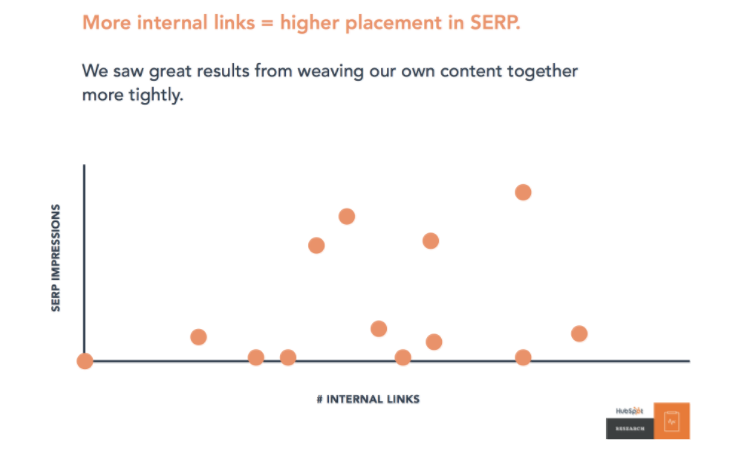The tides of content creation and SEO practices are constantly shifting.
The upside: these sea changes create a challenging and vibrant environment.
The downside: trying to keep current sometimes feels like getting caught in an informational riptide.
If you’ve been treading water just to keep your head afloat, let us throw you a lifeline.
A Quick, Fresh Take
While effective SEO strategy used to be all about tapping into frequently searched keywords to draw readers to your site, that approach won’t hack it alone anymore. If you’re going to have a prayer of keeping your head above water and successfully navigate in the future Google ranking system seas, you must now create pillar content. These pillar pages, when connected to content clusters, draw readers to your site and keep them there.
If the terms pillar content and content clusters have you backtracking right to Google (hello, meta!), then just hang tight.
We promise to explain the terms, offer practical tips to implement effective changes, and close with more than a few helpful resources to get you started.
A Fresh Metaphor
Perhaps pillars aren’t the best metaphor to understand how this new system of content creation works. For a clearer picture, let’s turn to the world of shopping malls.

Let’s say you go to the mall to buy a new pair of running shoes. While you’re there, you notice that your favorite electronics store is running a sale on wireless speakers. The prices are too good to pass up; you nip inside to pick up a set. Since all that shopping has made you thirsty, you swing by the food court to snag a sweet tea. As you exit to the parking lot through a department store, you spot an advertisement for an upcoming sale and make a mental note to come back soon.
That, after all, is the underlying strategy of shopping malls: to draw you in with easy access to something you want, and then keep you spending time (which usually equates to money) there.
Now that we’ve established the metaphor, let’s unpack it.
Within the world of content creation, the shopping malls are the pillar content, and the individual stores are the cluster content. People come to the mall for one reason (to shop), and the individual stores offer diversified shopping experiences (brands, styles, and services).
Likewise, readers come to your site seeking specific information. Through establishing content pillars (informational shopping malls), you can ensure that not only will they find what they’re looking for, but that they’ll then be drawn in further.
A Fresh Example
Let’s say you run a boutique tutoring service that specializes in ACT/SAT test prep. You expect and rely on the fact that your target audience can find your website via Google.
Your pillar page for this topic could be test prep. Your clusters, which would each be hyperlinked back to your pillar page, would cover various aspects of test prep and focus on terms that parents and students are likely to search:
- “college prep tests”
- “how to study for the ACT/SAT”
- “the difference between the ACT/SAT”
- “local test prep classes”
And so forth.
A Fresh Perspective
Understanding the pillar/cluster structure is foundational to addressing the gradual shifts in Google’s algorithm.
Whereas the old SEO model had you depending on specific keywords to draw people to your site, you will now need to structure around pillar pages. The good news is that this won’t require that you rewrite your entire site, although you may need to reorganize a bit.
Our friends over at HubSpot have put together this helpful graphic to help demonstrate how best to structure a site’s information to optimize it for the future of SEO and content.

As you can see, the pillar page and the cluster content are interconnected via a series of hyperlinks, creating feedback loops that will keep readers on your site.
Always remember that the actual, concrete form of your pillar pages and cluster content is less important than having high-quality content live on your site. Since it’s okay to mix-and-match forms, take time to consider your options. You can always root your pillar pieces as individual web pages, gated content (such as white papers or ebooks), or longer-form blog posts. Cluster content pieces, then, tend to take the form of shorter blog posts, a blog series, or other forms of media, such as videos or infographics.
Ultimately, all of your content—whatever form it takes—should meet your prospects and customers where they are, communicating your message concisely and helpfully.
A Fresh Approach
Based on this new model, then, our fresh approach to content creation is pretty clear. In many cases, it’ll be less about reinventing the wheel than about restructuring the wheel to ensure that all the spokes connect back to a hub (which a good wheel should do anyway—but let’s not get lost in the illustration).
To reiterate, think less in terms of what keywords will draw readers to your site and more in terms of broad topics you want your website to dominate and cover in considerable depth.
Again, HubSpot has provided some very compelling evidence that the number of internal links within your content does quite a bit to boost your visibility on Google.

The time has come, then, to fix a beady eye on the structure of your website content. Is it set up to facilitate the pillar/cluster model, or are you still just plugging away with those same old SEO keywords?
A Fresh Set of Eyes
If swimming the seas of SEO practices already has you feeling exhausted, take heart.
You’re not alone.
Here at Verblio (formerly BlogMutt), we’re doing our best to stay at the crest of the wave. We’re more than happy to share our view from the top and shout encouragement to those adrift on similar seas.
We’re not the only ones, either.
You’ll note that we’ve mentioned our friends at HubSpot repeatedly throughout this post. There’s a reason: not only have they been active in charting the changing tides, but they’re also developing new strategies and tools to help address and adapt to the changes for even the smallest businesses doing their own SEO.
Likewise, sites like Answer the Public offer tools to help map your approach to cluster content as it relates to your particular industry topics and frequently searched questions.
A Fresh-Faced Freelance Team
Most small business owners and entrepreneurs don’t employ teams of fresh-faced marketing executives to strategize SEO, yet they feel inadequate to address the challenges of content marketing themselves.
If you find yourself in a similar position, remember that you can always outsource pillar content to a service company who not only understands the strategy but can also help craft a mindful customer path (that leads directly to you!).
If you’d like to hear more about how Verblio can help, please feel free to contact us with any questions. We look forward to hearing from you.



